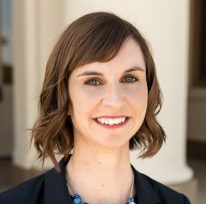
Recruiting and retaining teachers will be a top priority for Arizona education officials as they target ESSER relief funds to help schools rebound from COVID.
During the summer 2020 coronavirus spike in the state, the Arizona Department of Education partnered with Arizona State University to launch the Arizona Virtual Teacher Institute, which has served more than 10,000 teachers to date.
“One of our goals was to help teachers to better engage students during the pandemic,” Arizona Superintendent of Public Instruction Kathy Hoffman says. “There will be a need to continue working on digital skills, hybrid learning and other technology tools.”
Moving forward, the state will use Covid relief funds to expand professional development in social-emotional learning, which is a topic of high interest for Arizona’s K-12 educators. It will also devote $2.5 million to teacher mentoring programs through the Arizona K-12 Center, Hoffman says.
A number of Arizona districts are using relief funds to raise teacher salaries and benefits. Tucson USD, for instance, is offering teachers $1,000 retention bonuses.
Overall, the state has not seen a significant increase in retirements or resignations since the Covid outbreak, Hoffman says.
Equitable achievement
Hoffman’s department will also use relief funds to support schools in the state’s 22 tribal nations, which were hard hit by COVID. A partnership with Discovery Education will provide more learning materials and resources that focus on Native Americans, Hoffman says.
More on COVID relief: Here are 2 innovative ideas for virtual learning post-COVID
In virtual roundtables held with teachers during the pandemic, many educators asked for more high-quality resources that were aligned to state standards. “Many were paying for these types of materials out of their own pockets,” Hoffman says. “We saw this as a way to create equity for all of our teachers and to raise the bar what schools can offer.”
The state is putting $5 million into a fund for special education compensatory services, and will also conduct a study to assess the effectiveness of special education spending.
Finally, relief funds will also bolster partnerships with Big Brothers, Big Sisters and other community groups that offer activities for students considered at-risk or who have been disengaged in class. “We want to invest in programs that can hit the ground running and expand and scale up what they’re already doing,” Hoffman says.
Closing the digital divide
Millions more in relief money—from several state agencies—is funding the expansion of broadband in rural communities, and from schools and libraries to homes.
“Quite of few buckets of funding are helping Arizona to expand broadband access,” Hoffman says. “We want to pitch in and specifically help students get access.”
The Department of Education has used relief funding to purchase laptops and hotspots for students throughout the state. At the same, individual districts made big strides, in partnership with providers, in connecting families, she says.
“We have made some gains in access and a lot of credit for that I would give to local school leaders,” she says. “When we transition to all of our schools going virtual, they went into overdrive in helping to connect families to the internet.”









